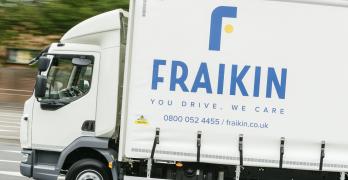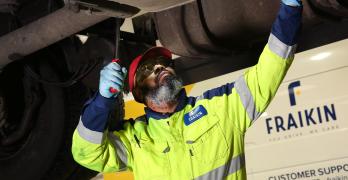Home delivery: how to structure your fleet when starting up your new service
- 12/09/23
- 4 min
If you’re starting up a home delivery service and are looking to structure your fleet, the regulatory environment will give you an initial idea of what vehicle to choose. The choice of engine and the fleet optimisation options will also be important for your company, even if it’s a VSB.

When we talk about structuring fleets, we’re generally thinking of multiple vehicles. However, in the case of small business that are just starting up their delivery service, the number of vehicles will be reduced, sometimes to as little as one. Even if limited to only one vehicle, a business’s fleet must be perfectly tailored to its needs. To make the right choice, you’ll need to consider certain key points.
Complying with new regulations for home delivery
While demand for home delivery has consistently risen over the last few years, cities have been doing more to limit commercial vehicle traffic. As such, home delivery must account for current regulatory requirements, and you’ll need to start by gathering information in order to build up your fleet. Restrictions generally relate to delivery times, noise, emissions, tonnage, dimensions and vehicle parking, everywhere in Europe. While complying with regulatory requirements is crucial in the short term, it will also be effective for as long as you hold onto the vehicles. In many cases, municipalities will stagger their implementation. As such, you will need to take into account the timetable for future changes whose deadlines are already known. In addition to local regulations, certifications are also required for drivers, including for tonnage, which will determine the type of permit they need (B for up to 3.5 tonnes, C1 for up to 7.5 tonnes, and C or CE for anything above). Check your equipment: if you’re using a lifting tailgate or a motorised pallet truck, you’ll need certification for that (in France, it’s called the Certificat d’Aptitude à la Conduite en Sécurité, or CACES). Lastly, in order to reduce noise, vehicles and vehicle bodies are increasingly being required to obtain Piek certification for night-time deliveries.
Accounting for charging or refuelling requirements when structuring your fleet
Another important point to consider is the engine used on your vehicle(s). If diesel is prohibited or soon to be prohibited, the choice between an electric engine or a compressed natural gas (CNG) engine is determined not only by local regulations, but also refuelling options. With a CNG vehicle, reaching a somewhat out-of-the-way station will require non-essential travel that will eat into the driver’s work time for something non-productive. Electric engines, meanwhile, require costly charging stations and a certain amount of downtime while charging. This downtime will prevent the vehicle from being used at two stations, which will require an increase in fleet size. If you need to deliver goods under controlled temperatures, there are electric or CNG refrigeration units that use the same type of energy used to power your vehicle.
Optimising your fleet for home delivery
In the city, the challenge that businesses face is to serve as many customers as possible with the least amount of driving. To that end, route optimisation services would be a useful tool to reduce mileage. Having up-to-date information on traffic conditions will help you put together an appropriate itinerary amidst the web of delivery points. Geofencing, meanwhile, can be used to let the recipient know when the delivery vehicle arrives, so that they’re ready to take receipt. Another way to optimise your fleet would be to provide a collection service at the same time as your deliveries. This type of reverse logistics might involve picking up mail parcels, re-usable packaging or recyclable waste. In this case, the vehicle’s equipment will need to be modified accordingly. Lastly, fleet management is a demanding and time-consuming task that should not be under-estimated. Delegating it to outside specialists could offer better insight on costs, while allowing company personnel to focus on their core job. The method of ownership can be chosen so that the ownership period may be adjusted based on the timetable for regulatory deadlines. This way, any additional costs imposed by these regulations will only need to be borne when essential.
Also worth reading

Labour’s Autumn Budget Uncertainty Highlights the Value of Contract Hire

Driver walkaround checks: Why they matter and how Fraikin is making them easier

